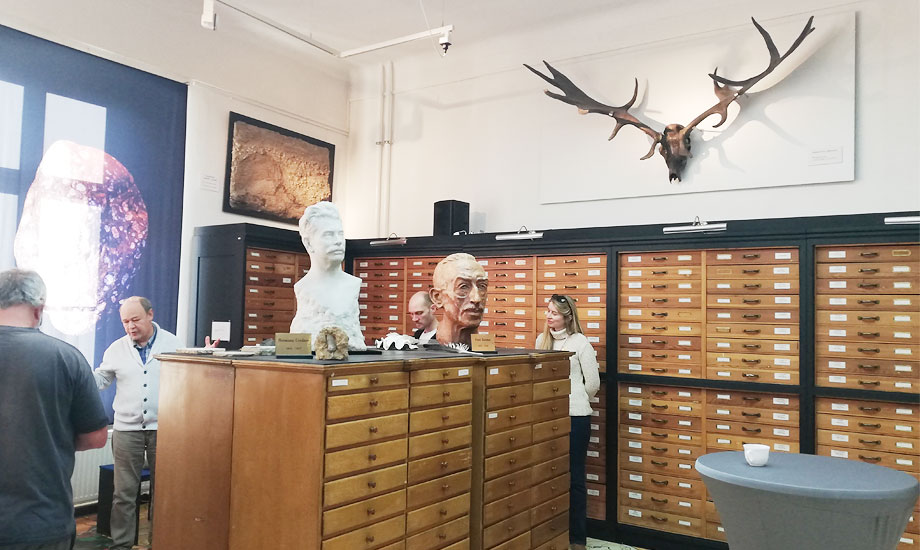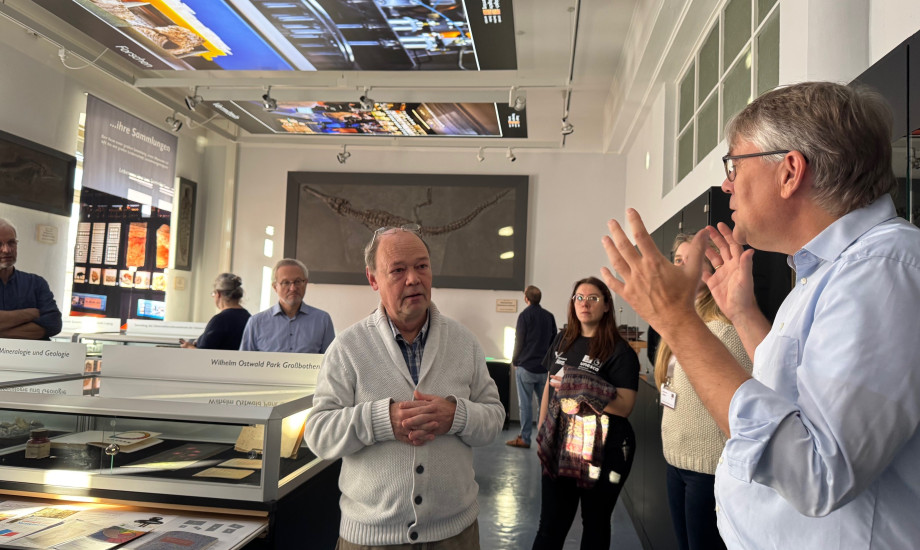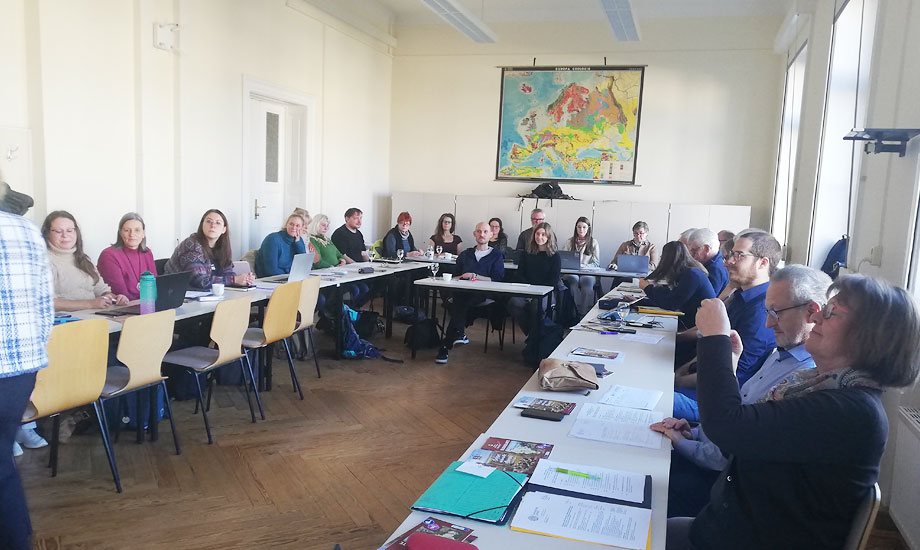Strong together for geoparks in Germany
On November 6 and 7, representatives from all 19 German National Geoparks gathered in Leipzig – including eight UNESCO Global Geoparks, among them the UNESCO Global Geopark Swabian Alb. The venue was the Institute for Earth System Science and Remote Sensing at the University of Leipzig.
The institute's geoscience collection dates back to the mid-18th century and includes numerous items of great scientific value. As in many important paleontological collections, it also contains impressive fossils from the Posidonia Shale of Holzmaden in the Swabian Alb. Some special items can be viewed in the online gallery of the institute at the University of Leipzig.
For two days, the focus was on discussions, sharing experiences, and jointly developing new ideas. The discussion about a uniform marketing strategy for all German geoparks was particularly exciting. The aim is to formulate a central message that sums up the diversity of the geoparks and at the same time enables everyone to identify with them.
The topics covered by geoparks in Germany are diverse: geotope protection, sustainable regional tourism, education for sustainable development, and geoeducation. The focus of the individual geoparks varies considerably – from tourism-oriented approaches to educational projects that teach sustainability and geoscientific concepts, as is the case at the UNESCO Global Geopark Swabian Alb.
The meeting provided ample opportunity for networking, inspiration, and looking beyond one's own geopark. It was organized by the Working Group of German Geoparks (AdG), which represents the interests of all national geoparks in Germany. The AdG is closely linked to the Geotopes and Geoparks Section of the German Geological Society – Geological Association (DGGV). All certified national geoparks are members; initiatives seeking recognition can participate as associate members.
Info: The Geological-Paleontological Collection at Leipzig University was founded in 1895 by geoscientist Hermann Credner, who recognized early on the importance of good visual aids for academic education and managed the collection from the outset.
-
 © Iris Bohnacker UNESCO Geopark Schwäbische AlbThanks to the work of generations of geoscientists at the institute and donations from important collectors and patrons, the Geological-Paleontological Collection at Leipzig University has grown into one of the largest and most significant fossil and rock collections in the German university landscape.
© Iris Bohnacker UNESCO Geopark Schwäbische AlbThanks to the work of generations of geoscientists at the institute and donations from important collectors and patrons, the Geological-Paleontological Collection at Leipzig University has grown into one of the largest and most significant fossil and rock collections in the German university landscape. -
 © Teresa Mangold UNESCO Geopark Schwäbische AlbThe approximately four-meter-long marine crocodile (in the background on the wall) lived around 200 million years ago in the Lias Sea, which was located in what is now southern Baden-Württemberg, and is one of the greatest treasures in the collection—an impressive fossil from the Posidonia shale of Holzmaden in the Swabian Alb.
© Teresa Mangold UNESCO Geopark Schwäbische AlbThe approximately four-meter-long marine crocodile (in the background on the wall) lived around 200 million years ago in the Lias Sea, which was located in what is now southern Baden-Württemberg, and is one of the greatest treasures in the collection—an impressive fossil from the Posidonia shale of Holzmaden in the Swabian Alb. -
 © Iris Bohnacker UNESCO Geopark Schwäbische AlbRepresentatives of Germany's 19 national geoparks attended their annual meeting in Leipzig, where the focus was on exchange, networking, and joint strategies over two days.
© Iris Bohnacker UNESCO Geopark Schwäbische AlbRepresentatives of Germany's 19 national geoparks attended their annual meeting in Leipzig, where the focus was on exchange, networking, and joint strategies over two days.